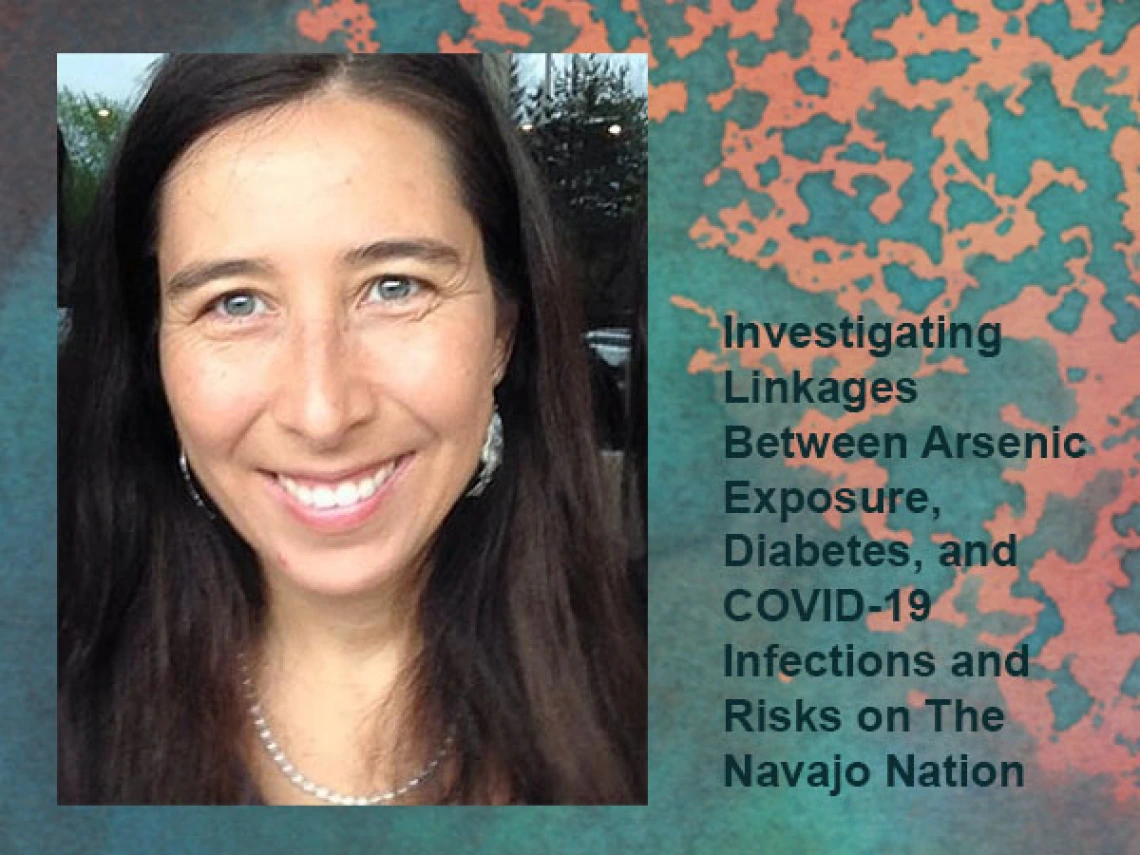Dr. Stephanie Carroll investigates linkages between arsenic exposure, diabetes, and COVID-19 infections and risks on the Navajo Nation

COVID-19 case rates on tribal lands are higher than the United States (US) national average and are still increasing. With the prevalence and high rates of comorbidities such as asthma, cardiovascular diseases, diabetes, and stroke; mortality and infection rates are expected to also be higher amongst Native Americans.
Other insecurities such as access to food, potable drinking water, indoor plumbing, and exposure to indoor air pollution from wood burning stoves may increase the risk of positive cases and death. Likewise, there is a high prevalence of multigenerational homes on tribal lands; this may also be a potential cause to the increased risk of positive cases.
A recently funded NIEHS R21 grant (9/1/2020 to 8/31/2022) will investigate the linkage between arsenic exposure, diabetes, and COVID-19 infections and risks on the Navajo Nation.
The team of researchers led by Dr. Stephanie Carroll (University of Arizona) and Dr. Jani Ingram (Northern Arizona University) along with Dr. Karletta Chief (University of Arizona), Dr. Paloma Beamer (University of Arizona), and Ricky Camplain (Northern Arizona University) has joined together with community partners to identify the environmental and individual risk factors for COVID-19 infection and death on The Navajo Nation.
Leveraging pilot funding from the Agnese Nelms Haury Foundation and as part of the larger collaborative project, “Assessing Navajo COVID-19 Risks and Increasing Indigenous Resilience”, this team of researchers will utilize publicly available data socioeconomic data, data from a variety of previous environmental projects, and Navajo Nation COVID-19 related health data, to create a dashboard as a resource on COVID-19 for decision-makers, community members, and mitigation efforts.
Working with three local chapters (communities) with the highest COVID risks, the team will be conducting interviews with first responders as well as local chapter officials to determine what are the most effective environmental health education mechanisms, messaging, and interventions to mitigate risk factors for COVID-19. They will then support messaging for these at-risk communities and then assess the effectiveness of implementation, as well as the effectiveness of the dissemination of culturally relevant information to tribal citizens about COVID-19.
The long-term goal of this project is to mitigate the spread of COVID-19 and other outbreaks on The Navajo Nation. Their research objective is to identify individual and environmental risk factors for COVID-19 infection and death among Navajo Nation residents. The rationale for the proposed research is that, once the specific risk factors for COVID-19 infection and death are known on The Navajo Nation, it will be possible to develop timely, targeted, culturally-relevant community education strategies, environmental health messaging and interventions that may benefit these high-risk communities. They will update COVID-19 data and analysis for dynamic messaging and response as the pandemic evolves.

